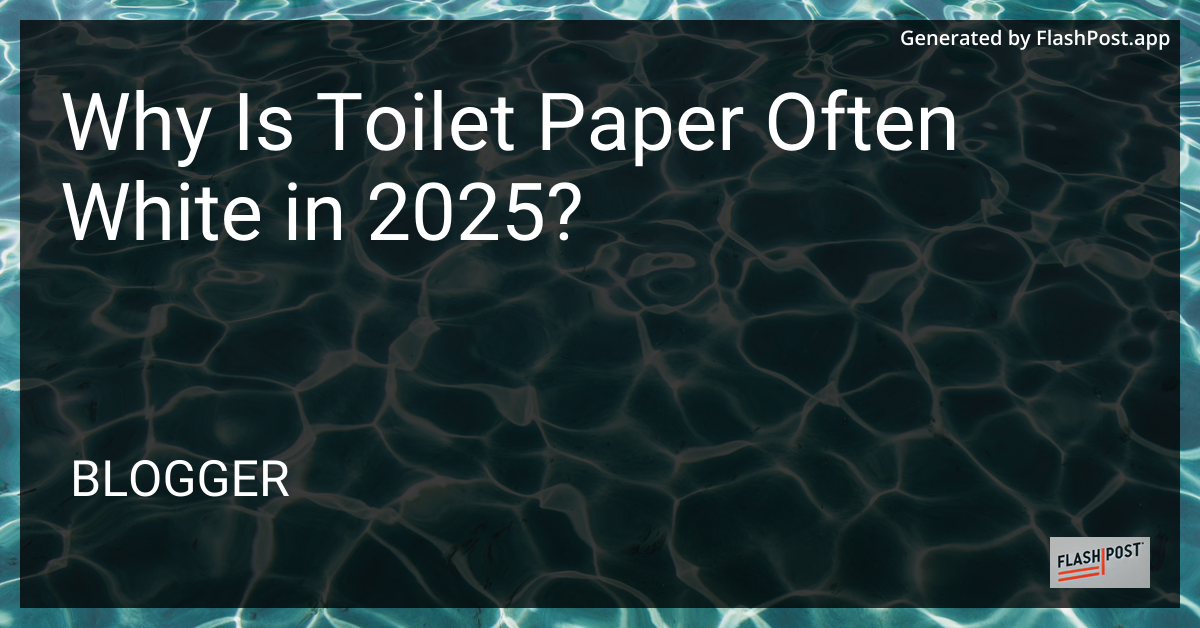Why Is Toilet Paper Often White in 2025?

Why is Toilet Paper Often White in 2025?
Toilet paper is one of the most essential household items that many people take for granted. A question that often surfaces is: why is toilet paper often white? This seemingly simple question has a fascinating answer that delves into manufacturing processes, consumer preferences, and hygiene standards. Let’s explore why the choice of white toilet paper continues to be popular in 2025.
The Bleaching Process: More Than Just Aesthetic
One of the primary reasons toilet paper is white is due to a bleaching process used during manufacturing. This process removes the natural color of the paper pulp, which is typically brown. The bleaching process serves several purposes:
- Hygiene: White toilet paper is perceived to be cleaner and more hygienic. Its color makes it easier to see if the paper is indeed clean, which is a crucial factor for consumers.
- Uniformity: Bleaching achieves a uniform white color that appeals to a greater range of consumers. It also helps maintain consistency in appearance across different batches and brands.
The Role of Consumer Preferences
White toilet paper has been the norm for decades due to consumer preferences. Over the years, people have associated white with purity and cleanliness. These perceptions influence purchasing decisions, and manufacturers cater to these expectations.
- Simplicity and Compatibility: Aesthetically, white paper is unobtrusive and fits into any bathroom decor without clashing with color schemes or patterns.
- Cultural Norms: Many cultures embrace white for its symbolism of purity and simplicity, making it a universally appealing option.
Cost-Effectiveness and Environmental Considerations
While bleaching sounds like an intensive process, manufacturers have found cost-effective methods to produce white toilet paper without significantly impacting the environment. Technological advancements in 2025 have led to more sustainable bleaching processes that minimize environmental footprints.
- Recyclability: White paper is easier to recycle. Advanced bleaching techniques in 2025 allow for effective recycling without harming the quality of the pulp.
- Innovations in Eco-Friendly Options: Eco-friendly and unbleached options have emerged, but white remains dominant due to consumer demand and aesthetic preferences.
Conclusion
The popularity of white toilet paper is a combination of tradition, practicality, and consumer expectations. While there are alternatives available, the classic white toilet paper continues to be a staple in households worldwide. Its uniform appeal, combined with practical benefits, ensures its place on store shelves in 2025. However, future advancements may introduce even more sustainable and innovative products to meet evolving consumer tastes.
For those interested in enhancing their bathroom setup, check out these top deals on toilet seat risers to complement your pristine bathroom experience.
Comments
Post a Comment